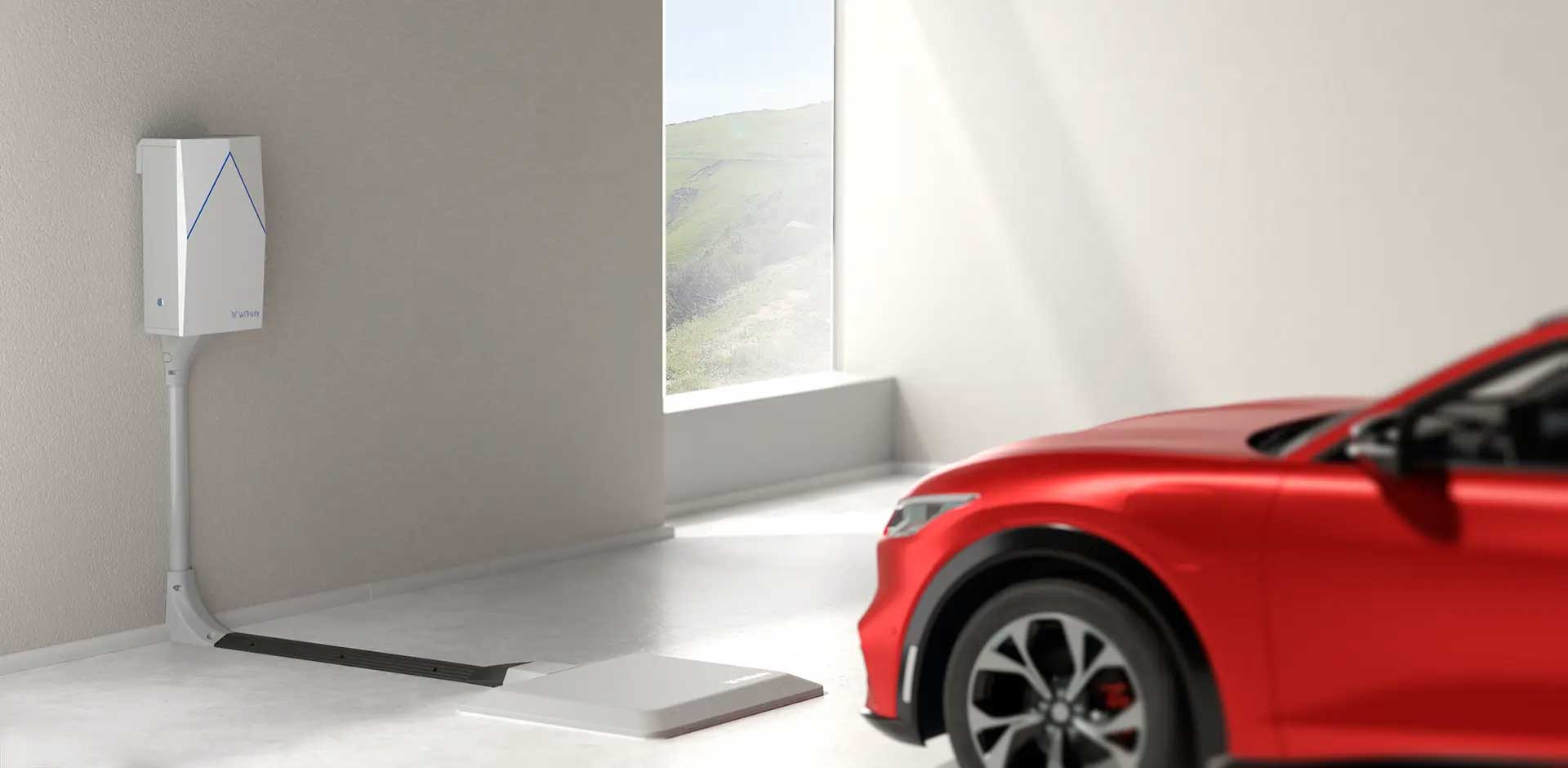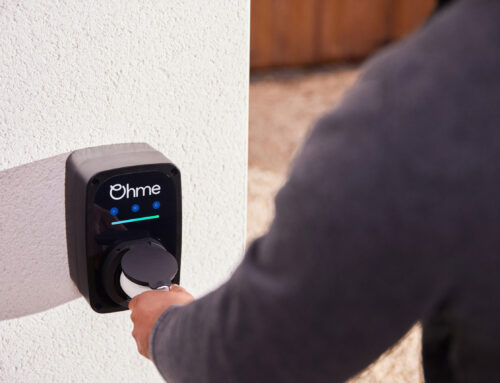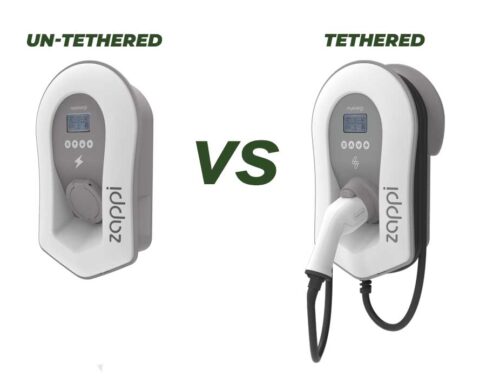Table of Contents
- The Benefits of Wireless EV Charging
- Integrating Wireless Charging Solutions into Public Infrastructure
- Improving EV Security with Wireless Charging
- The Efficiency and Economics of Wireless EV Charging
- Future Prospects and Challenges
All images in this post are credit of: www.witricity.com
Wireless charging for Electric Vehicles (EVs) is a game changer in the way we power our vehicles. Inductive charging is based on the principle that an electromagnetic field transfers energy between two coils (one in the housing of the ground-based charging pad and another integrated into the vehicle). This method frees us from physical cables and connectors to charge wirelessly, making the charging process more convenient and resistant to wear deterioration over time. The potential of this technology is vast, as indicated by a study by IDTechEx. The global market for wireless EV charging systems could grow to over $5bn by 2030!
The Benefits of Wireless EV Charging for EVs
Aside from improving the user experience with regard to wire management, one of the key benefits of wireless charging is how it could be used to transform carpooling with electric cars (More info on – Are Electric Cars Better For The Environment). Drivers can park directly over a wireless charging pad, and the vehicle will start automatically charging without any manual connection. In cities where space is at a premium and the infrastructure for traditional charging not always practical this is particularly beneficial. In addition, wireless EV charging in conjunction with autonomous driving could provide an unparalleled driver experience, and the normalcy of filling a fuel tank could be realised by automatic charging between parking times–thus decreasing the perceived range anxiety typical in consumers today−making electric vehicles more winsome for the wider population (More info on – DC Fast Charging).
Integrating Wireless Charging into Public Infrastructure
Yet another intriguing feature of wireless EV charging solutions is that it can be woven into the fabric of public infrastructure. You could equip roads and car parks with embedded charging pads that allow the vehicles to charge while idling at traffic lights, and maybe even power these cars on the go. The idea is to implement dynamic charging—left turns, anyone?—and cut down on the downtime from charging and keep EV fleets running at full tilt with innovative charging solutions. In years to come we hope that more pioneering stuff like the all-electric Jaguar XJ and dynamic wireless charging will go mainstream in a huge way, but right now trials on tech over in countries like Sweden and Italy are happening today.
Improving EV Security with Wireless Charging
Wireless charging technology could also be used to improve security. Given that traditional plug-in systems have been stationed out in the open for all their lives, these can be subjected to environmental factors like rain, snow and dust — which leads them to wear down gradually due to corrosion and potential malfunctions. Wireless system mitigates this in that its components are sealed, and as a result less likely of becoming open to degradation of performance and robustness. Utilising smart technologies to monitor the charging process also improves safety by providing real-time data and diagnostics that can avoid potential faults before they lead to breakdowns.

Credit: www.witricity.com
The Efficiency and Economics of Wireless Electric Vehicle Charging
While the convenience and safety are obvious, wireless EV charging may unfold a lot more potential in terms of efficiency and the economic aspect. Powerthru tech is coming closer and closer to wired efficiency as the technology slowly matures. A research paper from the Oak Ridge National Laboratory says today’s commercial wireless charging systems already hit power transfer efficiency rates ranging between 85% and 90%, which equals many plug-in chargers. Low energy loss translates into a cost reduction per charge, so wireless systems are finally competitive with their older cousins (More info on – How Much Does It Cost To Charge An EV? ).
However, setting up wireless charging infrastructure can be more expensive in the beginning from an economic point of view than conventional plug-in stations (More info on – Home EV Charging Infrastructure). But, in the long run, this can be more than made up for by savings and other benefits. Some examples would be less maintenance due to few moving parts and wear items, which could drive down overall operating costs. Moreover, the enhanced user experience can translate to increased take-up of EVs that could result in economies of scale and reduce costs for wireless charging systems over time.
In addition, the implementation of this wireless charging technology may lead to new sources of revenue. If implemented, cities and municipalities could actually make money off the move as it would be charging us to wirelessly charge our devices, just like parking meters. The model offers another way to make EVs pay back their investment and would also help new buyers feel comfortable that they have options for charging that are widely available and easy to access.
Apart from the economy, benefits can be passed on to the automotive industry as well. That the manufacturers would offer their product with wireless charging might create some differentiation and be interesting for a high end market willing to pay more for extra convenience and to feel futuristic. In addition, common wireless charging standards will force competing suppliers to lower prices and innovate to stay ahead in the market.
Go Wireless – Future Prospects and Challenges
What we can say, however, is the future for wireless EV charging and vehicle-to-grid technology shows a lot of promise, even if there remain several hurdles before either truly come into their own. The biggest challenge is to achieve standard protocols and interoperability between different charging systems and different vehicle brands. Standardization is essential, there must be a single solution between wireless charging infrastructure and V2G systems to ensure nothing is short of compatible and handy for the users.
These automotive technologies still have a long way to go in terms of development and deployment including huge investment and collaboration between sovereigns, enterprises and research institutions. An additional area for enhancing financing and collaboration is through public-private partnerships supporting charging station projects and fostering innovation (More info on – EV Charging Station Contractors). For the European Commission, its “Shift2Rail” initiative will work with global consortia and funding to deliver a range of technology (including wireless charging and V2G) for scheduled trains.
As much as public education is crucial for adoption. In order to remain competitive in the vehicle market, consumers must have a working knowledge of V2G technology, as well as wireless charging. Furthermore, educating constituents about these technologies and offering incentives along with implementing pilot programs can create greater general trust in them. One example is the UK’s Electric Vehicle Experience Centre, which gives consumers an opportunity to test-drive EVs and experience the technology, helping to foster greater confidence and appetite for electric transportation.
Meeting these challenges also requires sustainable funding and regulatory environments in order to incentivise innovation in wireless power transfer without compromising on safety and reliability. Enabling policies that provide incentives to develop and deploy wireless charging technology, encourage R&D, and establish standards to measure system efficiency, will help drive growth in the charging station market. As for electric vehicles, incremental improvements (in energy transfer efficiency and battery management systems) will drive down costs dramatically in addition to making wireless / V2G systems perform better overall (More info on – Electric Vehicle Home Charger Grant).
Advancements in wireless EV charging and vehicle-to-grid (V2G) technology herald a significant transformation in the EV charging landscape. These innovations promise seamless integration into public infrastructure, offering a compelling alternative to traditional plug-in systems due to their economic and environmental benefits
Wireless charging systems are particularly efficient, delivering impressive power output relative to their size and weight. Furthermore, the combination of V2G technology with wireless charging enables bidirectional power flow, enhancing grid resilience and supporting the integration of renewable energy sources (More info on – Zappi EV Charger)
But the largest issue right now as it pertains to the implementation of these technologies is standardisation, investment, public awareness, and regulatory support. For those reasons, partnerships between industry stakeholders, ongoing technological innovation and regulatory support will all be critical in achieving the full potential of wireless EV charging and V2G. As the technologies develop, they could reshape the future of electric mobility and help to drive a cleaner, more efficient world for transportation and energy alike.
Related search terms:
electric cars, types of electric cars, wireless charging solutions, dynamic charging, wireless power transfer, charge electric, wireless charging for electric cars, wireless electric road, ev owners, ev wireless charging, tesla, charge wirelessly, first wireless, charging network, charging cables, wireless charging solutions for electric, charging solutions for electric vehicles, wireless charging company, known as inductive charging, electric car drivers, charging at home, electric roads, charging vehicles as they drive, plug-in charging, charging could, magnetic resonance, commercial vehicles, autonomous vehicles, static charging, electrification, zero-emissions vehicles, charging efficiency, future of wireless, stop for a charge, passenger cars, fast and efficient, systems that allow, electromagnetic induction, buses and trucks, first public, pay a monthly, commercial fleets, low-speed, future-ready, public transit, business models
Ever wondered about EV Fleet Chargers ….Check out our latest blog post for details.








